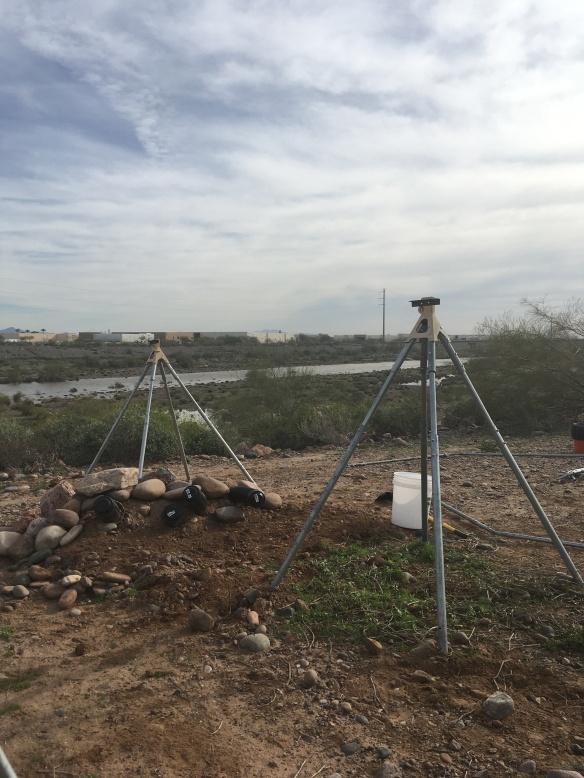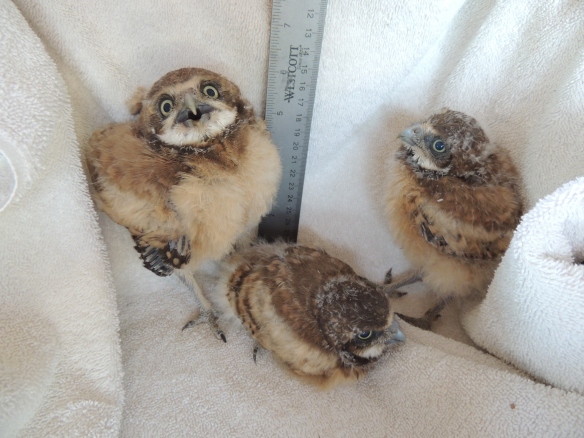
Owls at the Rio Salado artificial habitat site set up by Wild At Heart in Arizona. The program installs artificial burrows made out of PVC pipes throughout the Phoenix area to help provide homes for these ground-dwelling owls.

Artificial burrows being installed at one of the 2018 release sites.

Before owls are released in their new environments, they go through what is known as a ‘soft release’, which involves being held at the site within a release tent for 30 days before being let free. The idea behind a soft-release is that it promotes an attachment to the new site and increase the likelihood that the owl will stay.

Release tent set up.

Tent set up is a day-long process that involves muscle power and a good group of volunteers who want to help the owls.

Once the release tents are set up, owls are placed in their temporary confinement and are fed mice for 30 days.

Just before the release tents are taken down, we attach our transmitters to the owls, which will allow us to track them over the next year.

A lucky subset of owls will sport their backpack harnesses and transmitters for the next year.

Attaching the transmitters requires a special fitting of the backpack style harnesses. This is our up-close and personal time with the owls.

Once the harnesses are fitted on the owls, we superglue two knots to hold it in place and wait for it to dry. Sometimes the owls become so relaxed, they fall asleep in our hands during this time and sometimes they keep their eyes glued on us.

Owl with transmitter.

Now that this individual has its transmitter, the tracking fun begins!
To track the owls, we use an antenna and radio receiver that captures the signals of the VHF radio transmitters within a range of about 1000 meters.

Our summer ride-along guests learning how to use the receiver.

March and April are baby-making months for the owls, which means we start monitoring their nests with camera probes to determine if and when each pair establishes a nest.

Sometimes we just find an adult…

But sometimes, we find nestlings!

During the breeding season, we keep track of the nesting fates of each owl. If we can capture a juvenile, we will place a USFWS band on it in order to be able to identify it later on.

Juveniles being measured.
